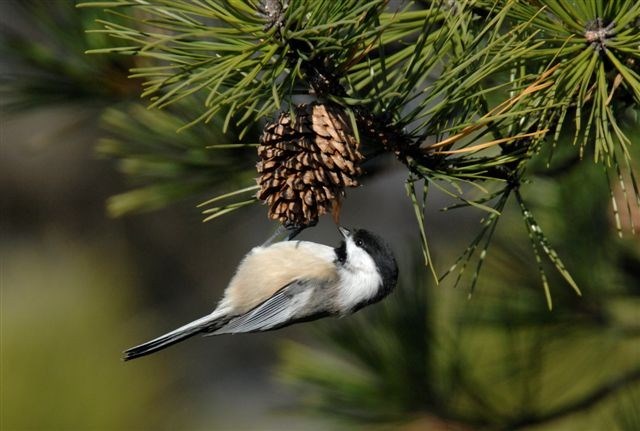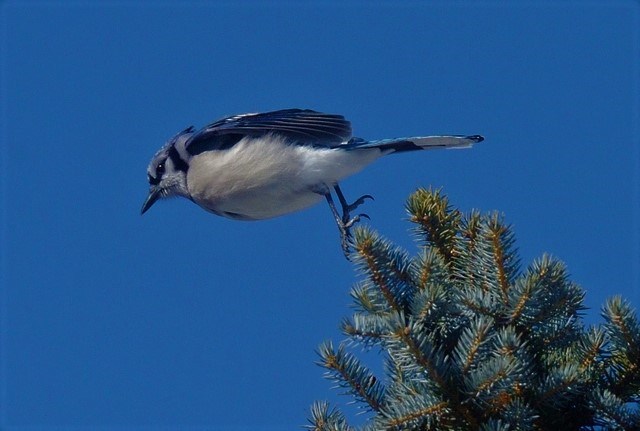
Scott Rando Perching birds, or passerine birds, constitute the largest order of birds on Earth today. More than half of the birds on Earth are classified in this group. They are distinguished, in part, by their anisodactyl feet, meaning they have three toes facing forward and one toe facing backward. This arrangement allows perching birds to clutch tree branches and trunks easily. Other common characteristics of perching birds include small to medium body size and vivid or distinctive colors. Many, though not all, perching birds also make calls and sometimes intricate songs. Perching birds are so successful due to their ability to adapt and evolve to different environments. Many perching birds exhibit unique feeding adaptations. Tree Swallows are aerial feeders and often chase prey with elaborate twists and turns. American Goldfinches have a conical bill adapted to seed-eating; their diet primarily consists of seeds from plants such as sunflowers and asters. Generally, perching birds are insectivorous, meaning they consume insects and other invertebrates. 
Scott Rando The courtship and nesting behavior of perching birds varies widely. For example, male Northern Waterthrushes chase females while shaking their wings and calling. Male American Robins attract females by singing, lifting their tails, vibrating their wings, and expanding their white striped throat. Perching birds may nest in various places, including trees, banks, cliffs, or simply on the ground. They typically construct nests using mud, grass, hair, feathers, bark, plant material, twigs, etc. Baltimore Orioles are known for their unique hanging nests found high up in the tree canopy. Females gather slender fibers that they weave together by rapidly moving their beaks back and forth. It can take females up to two weeks to construct the nest. After finding a mate and constructing a nest, perching birds lay clutches of anywhere from one to 14 eggs. Hatchlings are altricial, meaning they require extensive parental care. They are usually born blind and with minimal or no downy covering. Hatchings typically remain in the nest for 10 to 15 days and take weeks to become fully independent. Common perching birds found in the Upper Delaware Region include: American Crow (Corvus brachyrhynchos) American Goldfinch (Spinus tristis) American Robin (Turdus migratorius) Baltimore Oriole (Icterus galbula) Black-capped Chickadee (Poecile atricapillus) Blue Jay (Cyanocitta cristata) Cedar Waxwing (Bombycilla cedrorum) Louisiana Waterthrush (Parkesia motacilla) Northern Cardinal (Cardinalis cardinalis) Northern Waterthrush (Parkesia noveboracensis) Red-eyed Vireo (Vireo olivaceus) Scarlet Tanager (Piranga olivacea) |
Last updated: March 5, 2021
